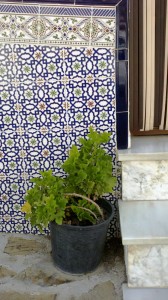From our friend Jonathan Pageau comes the latest in an acclaimed and growing series of fairy tales, written by Jonathan and beautifully illustrated by Elouise Scherrer.
In the storytelling tradition older than the Brothers Grimm comes Jack and the Fallen Giants. This numinous retelling of a beloved classic allows modern readers to reclaim the beauty of this well-beloved fairy tale through insightful storytelling and iconic illustrations. Like all great fairy tales, Jack and the Fallen Giants is written to be enjoyed by children but contains hidden treasures for readers of all ages.
Eloise Scherrer beautifully illustrates the book. As a young artist, Eloise was deeply inspired by the works of J.R.R. Tolkien and has spent her career giving shape and color to the best of European fantasy literature. Her attention to depth, textures, movement, and light creates whimsical and vivid illustrations that draw the reader into a realm of enchantment and imagination.
Order from the Symbolic World website: https://store.thesymbolicworld.com/
Tales for Once and Ever
Tales for Once and Ever is a series of eight interlocking fairy tales working towards a symphony of storytelling. With repeating themes and patterns in both story and illustrations, with recurring characters and situations that always honor the source material, this series is an invitation to dive back into a lived experience that is expressed in all of our folk and fairy tales. The Brothers Jacob and Wilhem Grimm did not write down anything "new" when they collected and published their stories in 1812. Rather, their publications preserved a tradition that related a lived experience through symbols.
This series is a return to an ancient storytelling style, a way to partake of the lived experience our ancestors were sharing in their homes, with their families, and in their communities long before modern times. This series also enhances that renewed story experience with striking illustrations that are invented alongside the narrative in a way that invites us — even implicates us — in the symbolic landscape through details that have always been hiding there in these ancient stories — like breadcrumbs — all along.
Order from the Symbolic World website: https://store.thesymbolicworld.com/
Vol 1 - Snow White and the Widow Queen
Vol 2 - Jack and the Fallen Giants
Vol 3 - Rapunzel and the Evil Witch (Spring 2025)
Vol 4 - The Valiant Little Tailor (Fall 2025)
Vol 5 - Sleeping Beauty (Spring 2026)
Vol 6 - The Boy and the Giant (Fall 2026)
Vol 7 - Rumplestiltskin (Spring 2027)
Vol 8 - Cinderella (Fall 2027)
-------------------
Praise for the first volume, Snow White and the Widow Queen.
"Fairy tales are meant to delight, and Snow White is one of the most treasured of that tradition. Now we can be doubly delighted by the reimagining of the legend by a masterful storyteller, Jonathan Pageau. Accompanied by the luminous illustrations of a gifted artist, Heather Pollington, the traditional tale has been transformed into a magical synthesis of word and image. Snow White and the Widow Queen presents a thrilling and mysterious take on the classic, mingling the rudiments of fairy with the greatest myths ever told. This retelling of the beloved fairy tale is sure to please readers of all ages, leaving children and adults spellbound."
- Robert Jackson, Executive Director, Great Hearts Institute
A new Symbolic World Store
In launching Jack and the Fallen Giants, we are also introducing the New Symbolic World store, where other books, prints and merchandise are offered, including the GodsDog series, a series of graphic novels exploring Biblical epic in a way that has not been seen before. Essays on Symbolism, like The Symbolism of Snow White and The Secrets of Godsdog are also available there.https://store.thesymbolicworld.com/


































